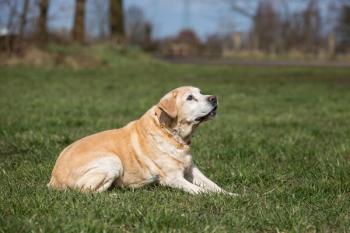
FDA approves new canine otitis externa medication
Dechra’s Otiserene is a single-dose, long-acting product that utilizes marbofloxacin
Dechra announced today that it has received FDA approval for its marbofloxacin, terbinafine, and dexamethasone otic suspension (Ostiserene; Dechra) to treat canine patients with otitis externa. This new product is a single-dose and long-acting medication that utilizes the antibiotic marbofloxacin, which is FDA approved itself for use in canine and feline patients with bacterial infections, especially in the bladder, kidneys, prostate, or skin.2
“With Otiserene, we will leverage the proven track record of marbofloxacin, now as part of a single-dose, long-acting solution for the treatment of challenging and recurrent canine otitis externa,” said Laura Olsen, president, North America, Dechra, in an organizational release.1 “This addition not only expands Dechra’s dermatology offerings, it also adds a convenient, broad-spectrum option for veterinarians to use with confidence on their most challenging patients, ultimately fortifying the special bond that people share with their dogs.”
RELATED
According to the release, the product will provide veterinary professionals, patients, and clients the benefits of a treatment that is single-dose and long-acting with a higher-tier antibiotic and power steroid.1 The combination of these products makes the product designed for tough, long-lasting, and recurrent otitis cases in the veterinary clinic.
Ostiserene contains 15.1 mg marbofloxacin, 22.7 mg terbinafine (which is equivalent to 25.5 mg terbinafine hydrochloride), and 2.01 dexamethasone, and inactive ingredients include mineral oil and paraffin. The product is indicated to treat otitis externa that is associated with susceptible strains of yeast (Malassezia pachydermatis) and bacteria (Staphylococcus pseudintermedius) in dogs
“I think treating otitis externa is so challenging because there's no one-size-fits-all remedy. It's very case-dependent, patient-dependent, client-dependent. So it's difficult because you have to be able to pivot and MacGyver things. And I think that's why some people don't like it. It's why I like it, because I get to tinker around and change things. But I think the lack of a simple easy answer is what makes it so tricky,” Julia Miller, DVM, DACVD, said in a previous interview with dvm360 about otitis externa.3
"There are a lot of things owners can do. I think, No. 1, it's really important that they have a good relationship with a veterinarian who can help guide them into the correct steps that will work for their specific dog, because the vet is going to be able to say 'This is what's going on with your pet,'” she concluded.
Ostiserene was evaluated against a vehicle control in a randomized and well-controlled masked field study.1 The study contained 232 client-owned canine patients with otitis externa in the United States. At day 30 of the trial, 71.3% of the dogs in the study treated with Otiserene displayed signs of clinical improvements in ulceration, redness, swelling, and exudative discharge compared to the 26.3% in the control group.
This new product needs to be administered by a veterinary professional. It is given in one dose (one tube) per affected ear (ears) and must be shaken before administering. Canine patients regardless of size and weight receive the same dose, which comes in a premeasured single-dose tube to help ensure patients in need of this treatment get the right dose every time.
Otiserene is not for use in feline patients, and it is recommended to restrain the canine patient to minimize postapplication head shaking. This product will be available to purchase for veterinarians in select veterinary distributors later this year. Any veterinary professional interested in obtaining the full Safety Data Sheet can contact Dechra at 1-866-933-2472.
References
- Dechra Announces FDA Approval of Otiserene® (marbofloxacin, terbinafine, and dexamethasone otic suspension) the latest treatment for canine otitis externa. News release. Dechra. May 1, 2025. Accessed May 1, 2025.
https://www.dechra-us.com/news/2025/may/fda-approval-of-otiserene - Howe S. Marbofloxacin (Zeniquin). petMD. February 27, 2023. Accessed May 1, 2025.
https://www.petmd.com/pet-medication/marbofloxacin-zeniquin - Yankowicz S. The challenges of treating otitis externa. dvm360. December 3, 2023. Accessed May 1, 2025. https://www.dvm360.com/view/the-challenges-of-treating-otitis-externa
Newsletter
From exam room tips to practice management insights, get trusted veterinary news delivered straight to your inbox—subscribe to dvm360.






